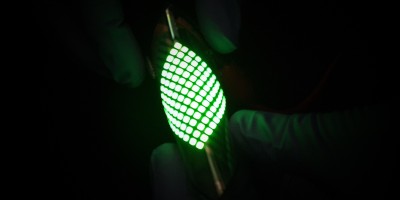Magnetic skyrmions are nanoscale spin configurations that hold promise as information carriers in ultradense memory and logic devices owing to the extremely low spin-polarized currents needed to move them.



References
Skyrme, T. H. R. Nucl. Phys. 31, 556–569 (1962).
Mühlbauer, S. et al. Science 323, 915–919 (2009).
Neubauer, A. et al. Phys. Rev. Lett. 102, 186602 (2009).
Pappas, C. et al. Phys. Rev. Lett. 102, 197202 (2009).
Parkin, S. S. P., Hayasi, M. & Thomas, L. Science 320, 197202 (2009).
Röβler, U. K., Bogdanov, A. N. & Pfleiderer, C. Nature 442, 797–801 (2006).
Dzyaloshinskii, I. E. J. Phys. Chem. Sol. 4, 241–255 (1958).
Moriya, T. Phys. Rev. 120, 91–98 (1960).
Crépieux, A. & Lacroix, C. J. Magn. Magn. Mater. 182, 341–349 (1998).
Fert, A. Mater. Sci. Forum 59–60, 439–480 (1990).
Fert, A. & Levy, P. M. Phys. Rev. Lett. 44, 1538–1541 (1980).
Heinze, S. et al. Nature Phys. 7, 713–718 (2011).
Yu, X. Z. et al. Nature 465, 901–904 (2010).
Münzer, W. et al. Phys. Rev. B 81, 041203(R) (2010).
Yu, X. Z. et al. Nature Mater. 10, 106–109 (2011).
Huang, S. X. & Chien, C. L. Phys. Rev. Lett. 108, 267201 (2012).
Seki, S. et al. Science 336, 198–201 (2012).
Raicevic, I. et al. Phys. Rev. Lett. 106, 227206 (2011).
Schulz, T. et al. Nature Phys. 8, 301–304 (2012).
Bauer, A. & Pfleiderer, C. Phys. Rev. B 85, 214418 (2012).
Ferriani, P. et al. Phys. Rev. Lett. 101, 027201 (2008).
Jonietz, F. et al. Science 330, 1648–1651 (2010).
Yu, X. Z. et al. Nature Commun. 3, 988 (2012).
Everschor, K. Current-Induced Dynamics of Chiral Magnetic Structures : Skyrmions, Emergent Electrodynamics and Spin-Transfer Torques. PhD thesis, University of Köln, Germany (2012).
Everschor, K. et al. Phys. Rev. B 86, 054432 (2012).
Iwasaki, J., Mochizuki, M. & Nagaosa, N. Nature Commun. 4, 1463 (2013).
Kiselev, N. S., Bogdanov, A. N., Schäfer, R. & Rössler, U. K. J. Phys. D 44, 392001 (2011).
Acknowledgements
We acknowledge the support of S. Rohart and A. Thiaville from LPS (Université Paris-Sud/CNRS), Orsay, France for the numerical calculations of Fig. 3, and K. Everschor who helped in the preparation of some of the figures.
Author information
Authors and Affiliations
Corresponding author
Supplementary information
Supplementary Information Movie S1
(GIF 1226 kb)
Supplementary Information Movie S2
(GIF 1461 kb)
Supplementary Information Movie S3
(GIF 1361 kb)
Rights and permissions
About this article
Cite this article
Fert, A., Cros, V. & Sampaio, J. Skyrmions on the track. Nature Nanotech 8, 152–156 (2013). https://doi.org/10.1038/nnano.2013.29
Published:
Issue Date:
DOI: https://doi.org/10.1038/nnano.2013.29
- Springer Nature Limited
This article is cited by
-
Motion and teleportation of polar bubbles in low-dimensional ferroelectrics
Nature Communications (2024)
-
Acoustic-driven magnetic skyrmion motion
Nature Communications (2024)
-
Dipolar skyrmions and antiskyrmions of arbitrary topological charge at room temperature
Nature Physics (2024)
-
The impact of local pinning sites in magnetic tunnel junctions with non-homogeneous free layers
Communications Materials (2024)
-
Non-local skyrmions as topologically resilient quantum entangled states of light
Nature Photonics (2024)


